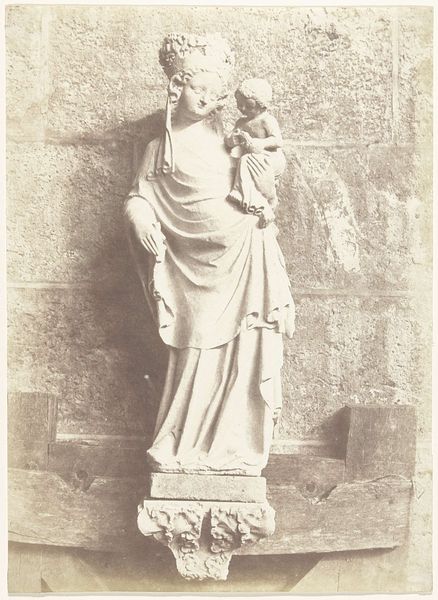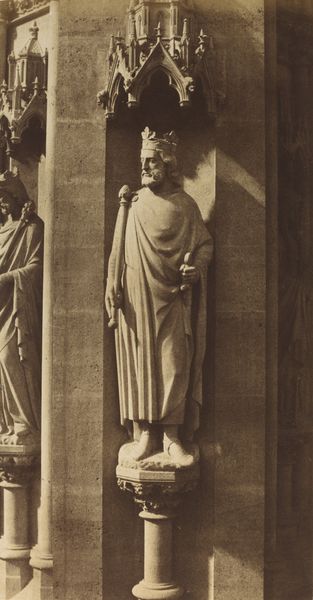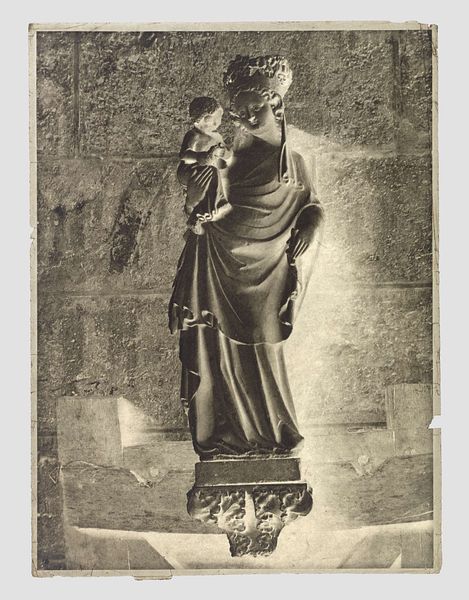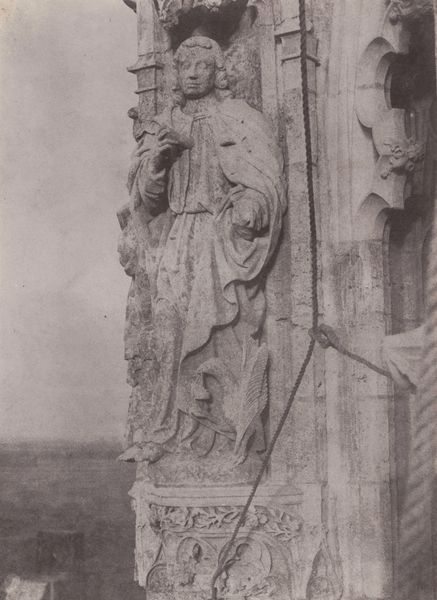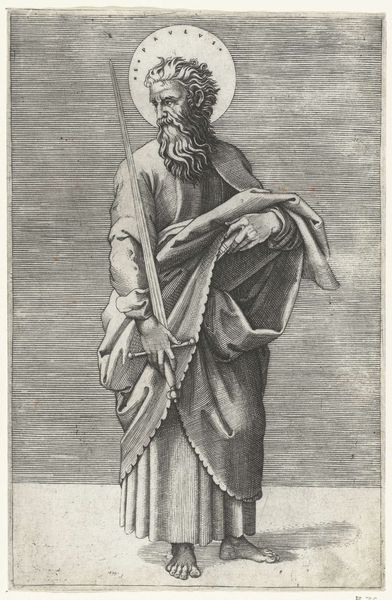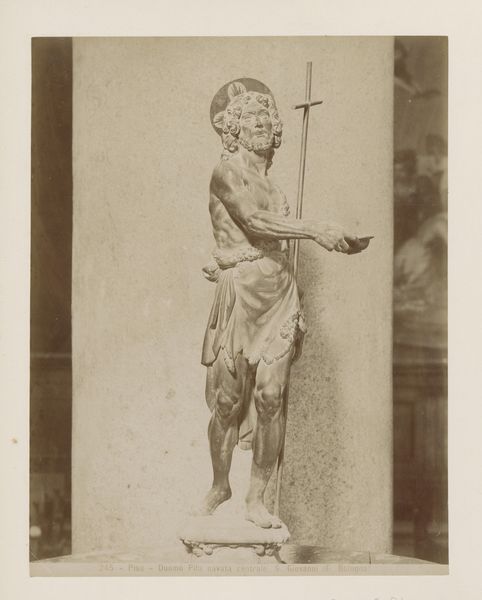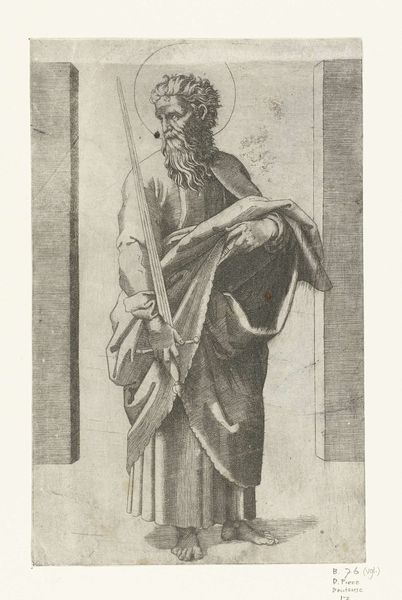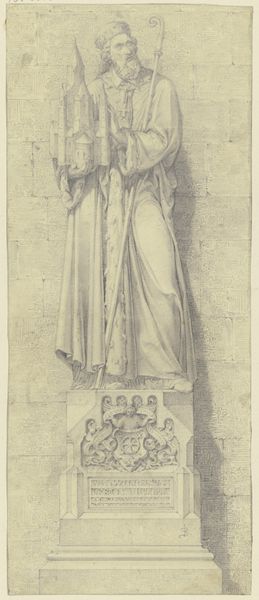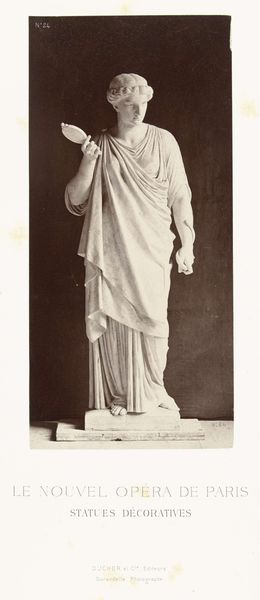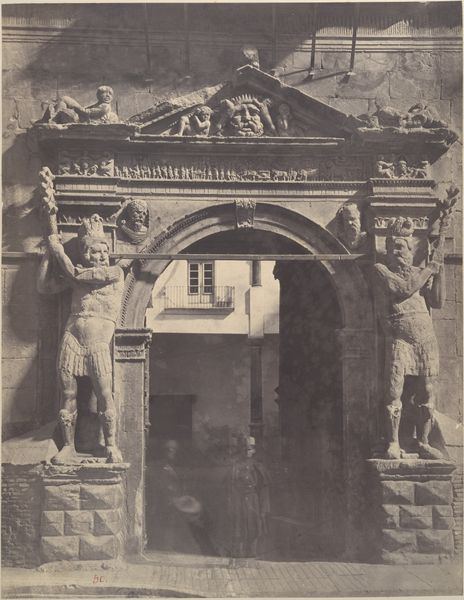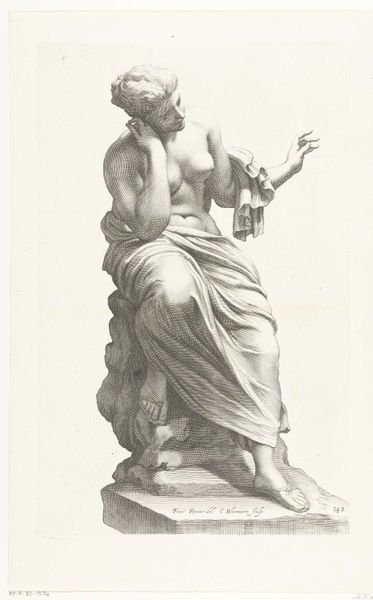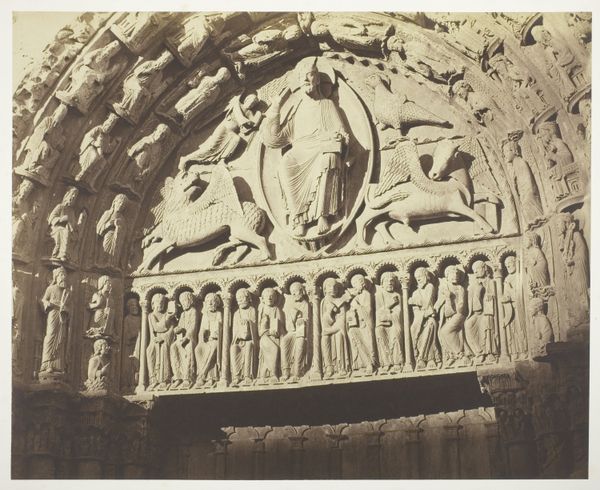
photography, sculpture
#
portrait
#
sculpture
#
photography
#
sculpture
#
history-painting
#
realism
Dimensions: height 355 mm, width 250 mm
Copyright: Rijks Museum: Open Domain
Curator: The texture of this image is captivating. The sculpture seems to emerge from the very fabric of the wall. Editor: Indeed! The work we're looking at, titled "Christus, le Beau Dieu, Salvator Mundi", is attributed to Charles Marville, dating between 1850 and 1854, on display here at the Rijksmuseum. This stunning example of Realist photography freezes a moment of medieval sculpture in time. Curator: Freezes, yes, but it also elevates! Note how Marville uses the light, or lack thereof, to enhance the monumentality of this "Beautiful God," as the title indicates. The shadowed folds of the robe convey volume; it's almost painterly. The texture of the stone feels palpable, aged yet enduring. Editor: I agree; there is something undeniably enduring communicated here. As Salvator Mundi—Savior of the World—this figure represents a potent symbol of faith, especially given its architectural setting within what I imagine is a Gothic cathedral, as it has other saints surrounding Christ, all looking at Him. Note, too, how he is positioned between a city, a modern building, to further communicate hope. His hand gestures towards a promise. It connects cultural memory to personal faith, which makes me question whether Marville could also be gesturing toward modern religious feeling. Curator: I find it fascinating how the photograph translates the three-dimensional sculpture into two dimensions, yet amplifies the message through contrast. This image, made through the relatively young technology of photography, is attempting to depict older beliefs through realism and portraiture techniques. You almost forget this is documenting existing religious ideas; the composition frames it like a character study. Editor: A visual reminder that time collapses within images; that meaning accrues, never disappears. Whether considering medieval cathedrals or photographs made during industrial growth, the visual grammar of religion and salvation still find modern means of interpretation. We can think about "Salvation" as religious and personal redemption, too, as hope remains something timeless and internal. Curator: Exactly. And Marville, whether intentional or not, preserves that ambiguity between documentation and reinvention. Editor: And invites us to consider its complexities.
Comments
No comments
Be the first to comment and join the conversation on the ultimate creative platform.
